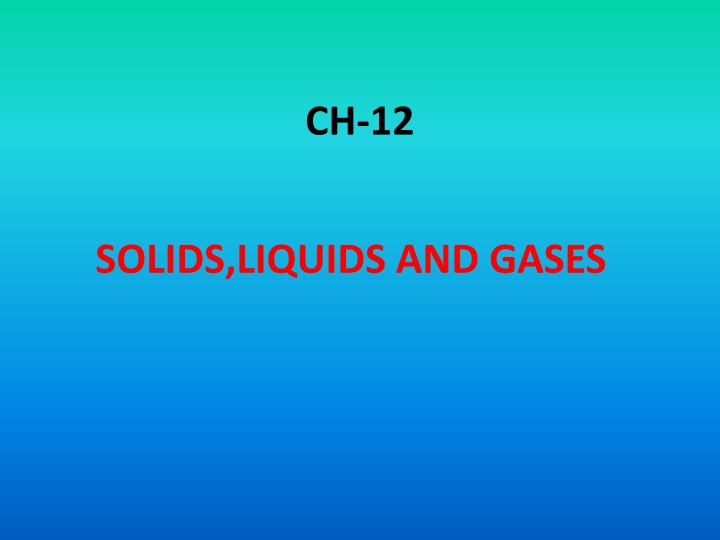
Understanding Matter: Solids, Liquids, and Gases
This educational content covers the properties and characteristics of solids, liquids, and gases. It includes images and explanations about floating, changing states of matter, true/false statements, definitions, and questions related to natural materials, differences between solids and liquids, and more.
Download Presentation

Please find below an Image/Link to download the presentation.
The content on the website is provided AS IS for your information and personal use only. It may not be sold, licensed, or shared on other websites without obtaining consent from the author. If you encounter any issues during the download, it is possible that the publisher has removed the file from their server.
You are allowed to download the files provided on this website for personal or commercial use, subject to the condition that they are used lawfully. All files are the property of their respective owners.
The content on the website is provided AS IS for your information and personal use only. It may not be sold, licensed, or shared on other websites without obtaining consent from the author.
E N D
Presentation Transcript
CH-12 SOLIDS,LIQUIDS AND GASES
Fill in the blanks a) An orange peel floats in water. b) A solid has a definite shape. c) On heating, fruit juice changes into gas. d) Sand is used to make glass. e) Gases do not have fixed shapes and sizes.
TRUE/FALSE a) All liquids have a fixed shape.(F) b) Some objects like cotton can sink and float.(T) c) Three states of matter are solid, liquid and gas.(T) d) Water, air, stone, are all examples of matter.(T) e) Silk , wool and milk are artificial things.(F)
Define the following a) Matter- Things that occupy space and have weight are known as matter. b) Melting- When we heat ice (solid) it changes into liquid, This process is called melting. c) Condensation-When we cool water vapour it forms water droplets (liquid), This process is called condensation.
Answer the following questions- Q1-Name any two natural things and explain their uses. Ans- Two natural things are- sand and gemstones 1) Sand is used to make glass. 2) Gemstones like diamond is used to make ornaments.
Q2- Differentiate between solid and liquid. Solid Liquid 1)Solid has fixed shape. 2)It does not change shape when transferred from one container to another. E.g.-table, book 1)Liquid does not has a fixed shape. 2)It changes shape when transferred from one container to another. E.g.- water, oil
